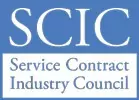Real Simple Magazine: Steps to Buying a House Checklist
Now that you’ve found your dream home, here’s how to breeze through the buying process. Get detailed instructions: How to Buy a House
Making an Offer and Negotiating the Close
Bid smartly.
Ask your real estate agent for prices of comparable homes in the area that have recently sold, and use those figures to determine your initial offer. Start a tad lower than those figures.
Make clear demands.
Be up-front about extras, such as curtains and light fixtures, that you want included with the house.
Use the closing date as a negotiating point.
If you don’t have to move by a certain date be flexible on when you move into your new home. You might be able to get other concessions from the sellers.
Ask the seller to buy a home warranty.
A good one will cost about $400 and can cover the cost of any major repairs for a year after closing.
Getting A Mortgage
Ask for refferrals.
Ask friends, family, your real estate agent, or loan officer for recommendations for lenders. Also, consider local credit unions. They have low rates if you qualify for membership.
Calculate your down payment.
To avoid having to buy private mortgage insurance, you need to pay at least 20 percent of the purchase price before closing costs.
Obtain quotes from at least three lenders.
Consult with both mortgage bankers and mortgage brokers to get the best interest rate.
Decide if you want to pay points to lower your rate.
Sometimes a bank will let you pay upfront to lower your interest rate, but it can get expensive.
The Inspection and Beyond
Find a qualified inspector.
Contact one of the professional organizations to find an accredited, self-employed expert who has performed at least 1,000 inspections. Expect to pay about $300 to $750 for a general inspection.
Request a detailed report in advance.
Find out what the finished report will look like first. You want it to be at least 10 pages and include photographs of anything that’s wrong.
Consider additional assessments.
Ask your real estate agent if they recommend additional inspections above and beyond the standard one. This will depend on the style of the house and when it was built.
Attend the inspection.
This is your opportunity to ask questions about the infrastructure of the house. Be sure to learn about the operation and locations of the gas and water shut-off valves and the breaker box.
Ask the repairman to provide written estimates for all fixes.
Your real estate agent will submit to the seller the anticipated costs of any problems found during the inspection.
6. Ask for a price credit.
You can control the quality if you schedule the repairs yourself. Request that the cost of any fixes be deducted from the sale price and have the work done after the purchase is final.
Hiring an Appraiser and Buying Title Insurance
Have the property appraised.
To determine its value, you need an appraiser, which your lender will hire. Make sure the appraiser has a copy of the sales contract to verify what is (and isn’t) being sold.
Ask your broker to provide a list of comparable properties.
Point out where the home being appraised has been improved and how that differs from other recent sales
Comparison-shop for title insurance.
You can choose the provider for this coverage, which protects you and your lender against liens. There’s no discernible difference in protection, so you can go with the cheapest option. Just be sure to ask the insurer for their rating.
Navigating the Closing Process
Consider hiring an attorney.
Lawyers aren’t always necessary for residential purchases, but if your situation is complicated or if you’re buying a foreclosure, it’s a good idea to hire one.
Lock in your interest rate.
Do so 30 to 45 days before your close. Rates aren’t expected to rise significantly for at least the next year and a half.
Obtain a detailed list of closing costs from your lender.
Besides the expense tied to your loan, you may have additional fees, such as title services and transfer taxes.
Watch for bogus fees.
Some lenders charge for preparing documents, messengering papers, or even printing e-mails. It’s worth asking to have these items removed from your bill.
Conducting the Final Walk-Through
Verify that all included appliances are in working order.
Turn on every faucet and flush toilets.
Plug something into each outlet.
Check the smoke detectors.
Test the heat and the air-conditioning.
Look for water and mold on ceilings.
Examine for signs of vermin.
8. Negotiate a closing credit if you find anything broken or missing.
Sign the contract, then move in.
